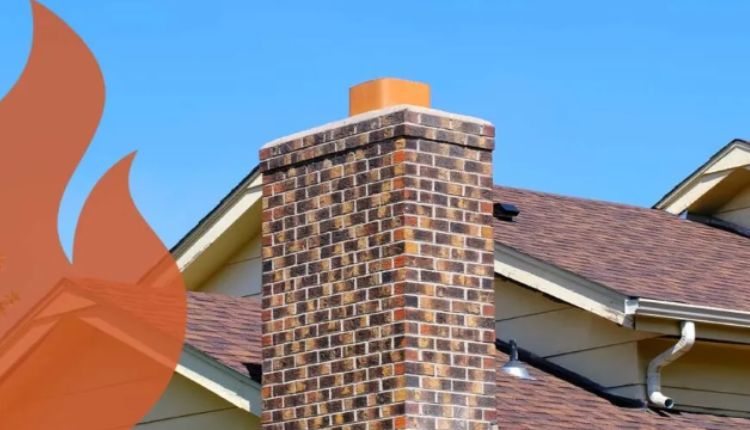In Massachusetts, where long winters and fluctuating temperatures are the norm, chimneys face more than just wear and tear—they endure serious structural stress. These weather extremes, combined with aging materials and moisture exposure, create a perfect storm for chimney damage. Homeowners might not think much of a few cracks or a little staining, but left untreated, these issues can lead to costly repairs and even safety risks. When it comes to trusted chimney repair Massachusetts, homeowners turn to skilled professionals who understand both the climate and common construction styles.
Freeze-Thaw Damage to Masonry
- Why It Happens: Bricks and mortar are naturally porous materials, meaning they absorb water. When this water freezes, it expands, creating pressure within the masonry, which causes the material to crack and break down over time. This cycle of freezing and thawing weakens the integrity of the chimney’s structure, making it prone to further damage.
- What to Look For: Homeowners will often notice pieces of brick or mortar breaking off and falling around the base of the chimney. Cracking along the Massachusettsmortar joints, a spongy or uneven surface, and visible gaps between the bricks are all signs that freeze-thaw damage has begun to take its toll.
- Solution: To prevent further damage, repointing is essential. This involves removing old, crumbling mortar and replacing it with fresh, high-quality mortar. Additionally, applying a breathable waterproofing sealant will help keep moisture out while allowing moisture trapped inside the masonry to evaporate, thus preventing the freeze-thaw cycle from continuing to cause damage.
Flashing Leaks Around the Chimney Base
- Why It Happens: Flashing is essential for preventing water from seeping into the space between the chimney and the roof. Over time, flashing can become corroded or loose due to age, extreme weather, or improper installation. This leaves gaps where water can enter, leading to hidden water damage within the attic or ceiling.
- What to Look For: The most obvious sign of flashing failure is water damage inside the home, particularly around the ceiling near the chimney. Homeowners may also notice mold, mildew, or a musty smell in the attic, and in more severe cases, dark spots or staining on ceilings directly below the chimney.
- Solution: The best solution is to replace the old flashing with high-quality, durable materials such as galvanized steel or copper, both of which resist corrosion. After replacement, the flashing should be resealed using waterproof materials to ensure a long-lasting seal. Regular inspections and maintenance of flashing can also help prevent leaks from occurring in the future.
Chimney Crown Cracks from Snow Load
- Why It Happens: During Massachusetts’ harsh winters, heavy snow and ice accumulate on top of chimneys. If the chimney crown is improperly sloped or made of brittle material like mortar, the weight of the snow and ice can cause it to crack or crumble. This can allow water to enter the chimney structure, leading to further Massachusetts damage inside the flue.
- What to Look For: Homeowners may notice cracks or chips along the top of the chimney, particularly around the crown area. If snow or ice buildup is present, this can worsen the damage. In some cases, water leaks in the firebox, or rust inside the chimney, can indicate crown damage.
- Solution: The best solution is to install a new, reinforced crown made of concrete or stainless steel. These materials are durable and Massachusetts to cracking, and when properly installed with a slight slope, they ensure that water runs off rather than collecting on top. A new crown will protect the chimney for years to come, especially when combined with a chimney cap to further shield it from weather.
Efflorescence (White Staining on Bricks)
- Why It Happens: Efflorescence occurs when water inside the chimney dissolves soluble salts within the brick or mortar. As the water evaporates, it leaves the salts behind, which appear as white, powdery stains on the surface of the chimney. While efflorescence itself is harmless, it is a sign of excessive moisture infiltration that could lead to more serious damage over time.
- What to Look For: Homeowners will typically notice white powdery stains on the outer surface of the chimney. The stains may appear in patches or streaks, particularly after rainfall or snowmelt. In some cases, these stains can spread and cause further deterioration if the moisture problem isn’t addressed.
- Solution: To resolve efflorescence, the first step is to improve drainage around the chimney by ensuring that gutters are clear and downspouts direct water away from the base. Additionally, applying a breathable masonry sealer can help prevent further water penetration while still allowing the brick to “breathe” and release any trapped moisture.
Condensation Issues in Metal Flues
- Why It Happens: Metal flues are prone to condensation because the hot gases from the fire meet the cooler surface of the flue, especially in colder climates. This condensation creates moisture, which can lead to rust and corrosion over time, as well as increased buildup of creosote.
- What to Look For: Signs include water dripping from the damper or flue, rust or corrosion on the flue itself, or an unpleasant, musty smell emanating from the fireplace. In severe cases, homeowners may notice damage to the masonry surrounding the flue due to moisture exposure.
- Solution: Installing an insulated liner is the most effective way to address condensation issues. The insulation helps maintain a consistent temperature inside the flue, reducing the risk of condensation. Homeowners should also consider installing a top-sealing damper to prevent moisture from entering the chimney when not in use.
Conclusion
Chimneys may seem like simple structures, but in a climate as tough as Massachusetts, they take a beating year after year. From crumbling bricks and leaky flashing to moisture-stained exteriors and damaged crowns, the problems are varied—but preventable. By identifying issues early and addressing them with the right tools and Massachusetts, homeowners can protect both their chimneys and the rest of their homes. With proper care, a chimney can safely serve its purpose for decades.






